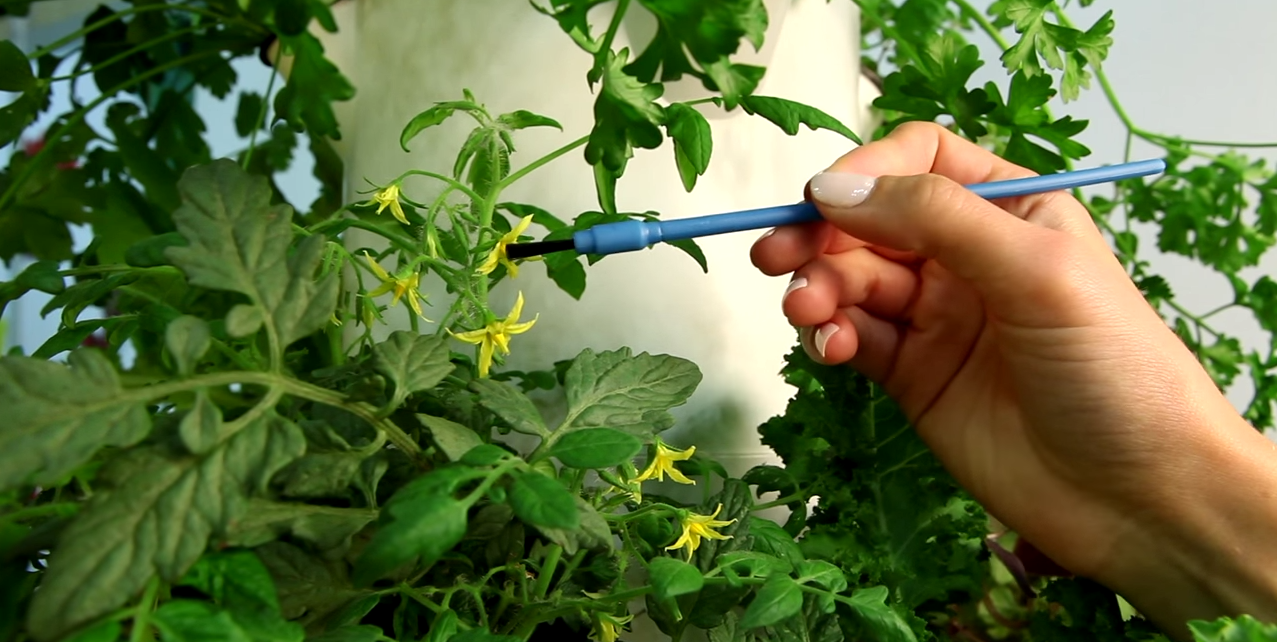In the city, there is not always the necessary amount of pollinators that we would like and many urban gardens suffer the consequences of lack of pollination, falling flowers to the ground and never bearing fruit. The truth is that the solution to this problem is simpler than it seems, then I will explain how to pollinate tomatoes.
How to pollinate tomatoes?
The optimal climatic condition for good tomato pollination is produced at temperatures between 23 and 25 ° C. In the case of cucumbers, it is not necessary to place bumblebees because the majority are parthenocarpic (the fruit is formed without having to be fertilized).
Heat is one of the factors to be considered in pollination. When temperatures are above 32 ° C, pollination is difficult. As the temperature increases, the stigma lengthens, being able to be seen outside, and this lengthening does not allow the pollen segregated by the stamen to fall within the stigma.
The only method that can help us in these high-temperature conditions is the artificial pollination with hormones, knowing that the quality of the fruit and its consistency would be of intermediate quality.
When making hormone applications, we must bear in mind that these must be directed to the flowers and not to the whole plant, being effective only in those flowers that are open.
I suggest that the applications begin when you have 2 to 3 flowers open in the first bunch and do not make more than three applications in the crop, as the plants react to an excess of hormone, turning the leaves filiform. Generally, the fruits of the result of these hormone applications have no seeds.
Why use bumblebees and not bees in tomatoes?
It is a question frequently asked by some producers. Tomatoes do not produce nectar in flowers, but pollen and bees feed on nectar, while bumblebees look for pollen to feed the young.
Cold. In regions with climate conditions below 10 ° C it is very common for pollination to be difficult.
In these cases, it happens that the pollen, being a little compact due to the high relative humidity, does not achieve good fecundation and the final result is a hollow fruit and deformed.
It is very common that at a certain stage of the production cycle one or two fructifications of bad quality are presented and as time goes by it returns and is fixed; At the time of that stage there is nothing we can do, just wait – the problem is not bad nutrition and management, but climate.
Relative humidity
To achieve optimal pollination we must have a relative humidity between 60 and 80%. When it exceeds 85%, the pollen becomes compact and what I mentioned above happens. When the relative humidity drops by 50%, the pollen dries and does not germinate, which makes pollination difficult.
Bumblebee function
It is the best existing method of pollination. With this method, we obtain the best results in yield and fruit quality. Some people think that the use of bumblebees is useless when it is most likely that their method of work and the use they have been given has not been adequate.
How do you know which flower is male and female?
It is easy to answer the question because it is the same flower that has both sexual parts (hermaphrodite), so the tomato flower would self-fertilize only that it needs the intervention of insects or the wind to make pollination easier and produce the fertilization of the fruit. If you look at the photo above we can see some yellow petals that surround “a thing” elongated yellow, well that is the stamens (male organ) that have the necessary pollen to fertilize the pistil (female organ) that is inside the flower.
And in the next photo you can see the outer part of the pistil that is known as stigma, which is a kind of tube through which the pollen enters to fertilize the plant.
If it has not been clear to them, the pistil is the female organ that has the shape of a bottle, it is formed by the stigma (which we already saw is the external part in the form of a tube), the style (which is the tube that leads to the interior) and the ovary (which is where the pollen grain arrives to fertilize the plant and form the fruit).
Should we pollinate tomatoes?
After knowing the important parts of the flower we ask ourselves this question, well, it depends on our circumstances. If our garden is in a place where we see that there are usually not many visits from pollinators such as bees, flies, butterflies … then that is when we must act to help the flower to pollinate. Carefully take the branch where the flowers are and gently shake gently not to split it for a few seconds. We would be imitating the vibrations that the insects produce when they reach the flower when the time passes and the tomatoes start to come out we will see that the pollination was a success!






Average Rating